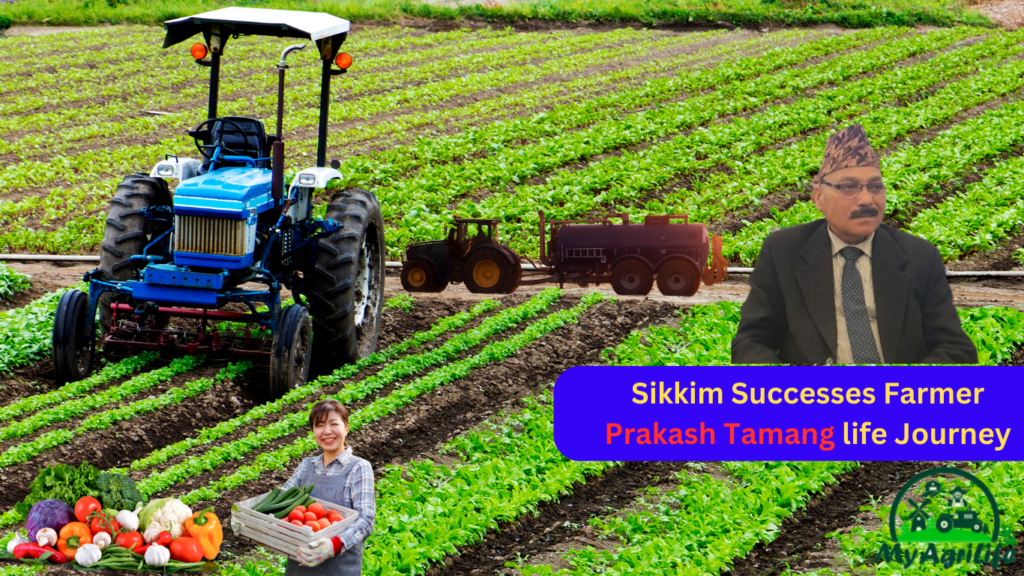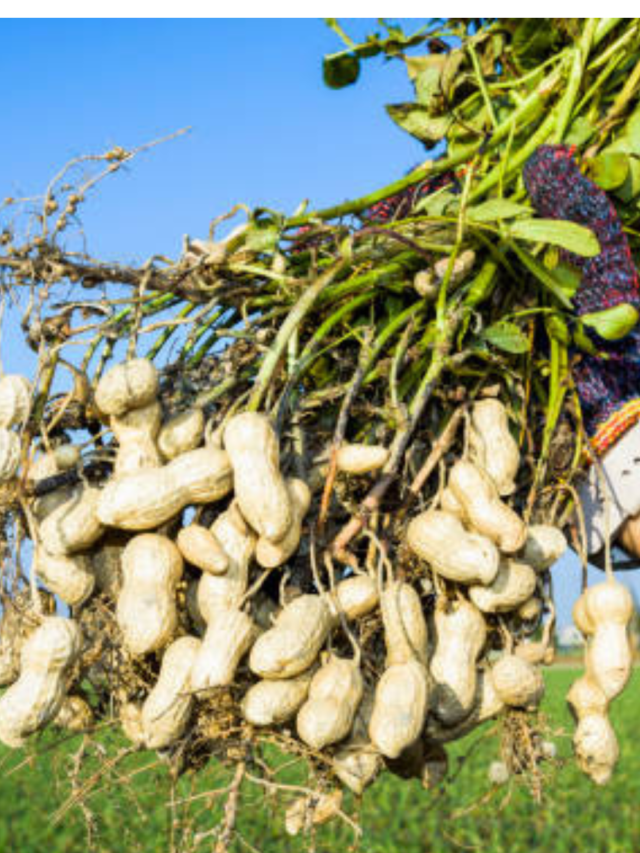Table of Contents:
1.Introduction
2.Early Life and Background
3.Passion for Farming
4.Challenges Faced
5.Innovative Farming Techniques
6.Sustainable Farming Practices
7.Community Involvement and Impact
8.Recognition and Awards
9.Sharing Knowledge and Inspiring Others
10.Conclusion
Introduction
The introduction section sets the stage for the content and provides a brief overview of Farmer Prakash Tamang’s life journey, highlighting his accomplishments and significance. Here’s an example:

Farmer Prakash Tamang is a remarkable individual whose journey has been an inspiration to many. Born and raised in a rural village, Prakash developed a deep passion for farming from a young age. Throughout his life, he has overcome numerous challenges and made significant contributions to the field of agriculture through his innovative techniques and sustainable practices.
This article explores the incredible story of Farmer Prakash Tamang, shedding light on his early life, his unwavering dedication to farming, the obstacles he faced, and the positive impact he has had on his community. Join us as we delve into the remarkable journey of this extraordinary farmer, whose achievements have not only garnered recognition and awards but have also inspired countless others to follow in his footsteps.
Early Life and Background
Prakash Tamang was born and raised in a small rural village nestled amidst picturesque landscapes. Growing up in an agricultural community, he was exposed to the beauty and challenges of farming from an early age. Prakash’s family had a modest farm, where they cultivated crops and raised livestock to sustain their livelihood.
From his childhood, Prakash developed a deep connection with the land and a profound respect for nature. He observed his parents and grandparents tending to the fields with immense dedication and hard work. Their perseverance and love for farming instilled in him a strong desire to follow in their footsteps and make a meaningful contribution to the agricultural sector.
Despite limited resources and educational opportunities in his village, Prakash’s thirst for knowledge led him to seek ways to expand his understanding of farming techniques and practices. He would eagerly listen to the experiences and wisdom shared by elderly farmers in his community, gleaning valuable insights that would shape his own farming journey.
Prakash’s family supported his aspirations and encouraged him to pursue further education in the field of agriculture. With their unwavering support, he embarked on a journey of self-improvement, determined to acquire the skills and knowledge necessary to become a successful farmer.
Through his hard work, determination, and a burning passion for farming, Prakash Tamang laid the foundation for what would later become a remarkable and inspiring life journey. His humble beginnings and the lessons learned during his early years would shape his future endeavors and set him on a path to transform the agricultural landscape.
Passion for Farming
From an early age, Prakash Tamang’s passion for farming burned brightly within him. It was more than just a means of livelihood; it was a calling, a deep-rooted connection to the land and a genuine love for nurturing plants and animals.
Prakash found solace and joy in the simple act of tending to the fields. He would spend hours observing the growth and development of crops, understanding the intricacies of soil composition, and learning about the needs of different plants. His hands, calloused from hard work, were a testament to his unwavering dedication.
Farming was not just a profession for Prakash; it was a way of life. He approached each day with enthusiasm and a desire to make a positive impact on his land. His commitment to sustainable farming practices and his belief in the importance of organic methods further fueled his passion.
Prakash saw farming as a harmonious partnership with nature. He believed in working with the natural rhythms of the seasons and utilizing environmentally friendly techniques to maximize yields. His deep respect for the earth guided him in cultivating crops that were not only healthy and nutritious but also environmentally sustainable.
Beyond the physical aspects of farming, Prakash recognized the importance of knowledge-sharing and collaboration. He eagerly attended agricultural conferences, workshops, and seminars to stay abreast of the latest advancements in the field. He would engage in discussions with fellow farmers, exchanging ideas and experiences, always seeking to improve his own practices.
Prakash’s passion for farming was infectious. His enthusiasm and love for the land inspired those around him, motivating them to reconnect with their agricultural roots and embrace sustainable practices. His unwavering dedication to his craft would soon lead him to develop innovative farming techniques that would revolutionize the way farming was approached in his community and beyond.
Challenges Faced
Prakash Tamang’s journey as a farmer was not without its fair share of challenges. He encountered numerous obstacles along the way, each presenting an opportunity for growth and resilience. Here are some of the challenges he faced:
1.Limited Resources: Prakash’s village lacked adequate resources and modern farming equipment. Access to quality seeds, fertilizers, and irrigation systems was limited, making it difficult to achieve optimal yields. Prakash had to find creative solutions and make the most of the available resources to maximize productivity.
2.Unpredictable Weather Patterns: Like many farmers, Prakash had to contend with the unpredictable nature of weather patterns. Droughts, floods, and other extreme weather events posed significant risks to his crops and livestock. He had to learn to adapt and implement strategies to mitigate the impact of adverse weather conditions.
3.Market Volatility: Fluctuating market prices and uncertain demand presented challenges for Prakash. Finding reliable buyers and securing fair prices for his produce was a constant struggle. He had to develop marketing skills and establish strong networks to ensure the profitability of his farm.
4.Lack of Information and Training: In his early years, Prakash faced a dearth of information and formal training opportunities. Access to agricultural extension services and technical guidance was limited, making it challenging to adopt modern farming practices. However, he sought alternative ways to acquire knowledge, leveraging his community network and seeking guidance from experienced farmers.
5.Resistance to Change: Introducing innovative and sustainable farming practices often faced resistance from traditionalists in the community. Convincing fellow farmers to embrace new techniques and depart from conventional methods was an uphill battle. Prakash had to demonstrate the benefits and long-term viability of his approaches through his own success and lead by example.
Despite these challenges, Prakash Tamang remained steadfast in his pursuit of excellence. He approached each obstacle as an opportunity to learn and grow, continually striving to overcome adversity and create a thriving and sustainable farming enterprise. His perseverance and determination would soon bear fruit, as he developed innovative techniques and practices that would transform his farm and inspire others in the process.
Innovative Farming Techniques
Prakash Tamang’s commitment to finding sustainable and innovative solutions led him to develop and implement several groundbreaking farming techniques. These techniques not only improved the productivity and efficiency of his own farm but also served as a model for other farmers. Here are some of the innovative farming techniques introduced by Prakash:
1.Organic Farming: Prakash embraced organic farming practices, eliminating the use of synthetic fertilizers, pesticides, and genetically modified organisms. He prioritized the use of natural compost, crop rotation, and biological pest control methods to maintain soil health and enhance biodiversity.
2.Precision Agriculture: Prakash implemented precision agriculture techniques, utilizing advanced technologies such as drones and sensors. By gathering data on soil moisture, nutrient levels, and crop health, he could make precise decisions about irrigation, fertilization, and disease control, optimizing resource usage and minimizing waste.
3.Hydroponics and Vertical Farming: To overcome land constraints and maximize productivity, Prakash adopted hydroponics and vertical farming systems. Hydroponics allowed him to grow plants in nutrient-rich water solutions without soil, while vertical farming utilized vertical stacking of crops in controlled environments, optimizing space utilization and increasing yields.
4.Agroforestry: Prakash integrated agroforestry practices into his farm, combining tree cultivation with traditional crops. This approach provided multiple benefits, including improved soil fertility, microclimate regulation, and diversified income streams through the sale of timber, fruits, and nuts.
5.Greenhouse Cultivation: Recognizing the need for year-round production and protection against extreme weather conditions, Prakash implemented greenhouse cultivation. Greenhouses provided controlled environments for crop growth, enabling him to extend growing seasons, protect crops from pests and diseases, and optimize resource utilization.
6.Aquaponics: Prakash embraced the concept of aquaponics, a system that combines fish farming (aquaculture) with hydroponics. This symbiotic relationship allowed him to utilize fish waste as a nutrient source for plants while the plants filtered and purified the water for the fish. This integrated system provided a sustainable and efficient method for both fish and plant cultivation.
Prakash’s innovative farming techniques not only increased productivity and sustainability but also inspired his fellow farmers to adopt similar approaches. His willingness to experiment, adapt, and share his knowledge contributed to the overall growth and development of the agricultural community, paving the way for a more sustainable and efficient farming future.
Sustainable Farming Practices
Prakash Tamang’s dedication to sustainable farming practices played a central role in his success as a farmer. He recognized the importance of preserving the environment, conserving resources, and maintaining the long-term viability of his farm. Here are some of the sustainable farming practices he implemented:
1.Crop Rotation: Prakash practiced crop rotation, systematically alternating the types of crops grown in a particular field each season. This practice helped break pest and disease cycles, improved soil health, and reduced the need for chemical interventions.
2.Soil Conservation: Prakash prioritized soil conservation by implementing techniques such as contour plowing, terracing, and cover cropping. These practices helped prevent soil erosion, retain moisture, and enhance nutrient levels, ensuring the long-term fertility and productivity of his land.
3.Water Management: Prakash employed efficient water management strategies to minimize water waste and optimize irrigation practices. He utilized drip irrigation systems, rainwater harvesting, and mulching techniques to conserve water and reduce dependency on external water sources.
4.Integrated Pest Management (IPM): Rather than relying solely on chemical pesticides, Prakash implemented IPM strategies. He introduced natural pest predators, used pheromone traps, and employed crop rotation to manage pests and diseases effectively, reducing the need for harmful chemicals.
5.Conservation of Biodiversity: Prakash created biodiverse habitats within and around his farm, planting native trees, shrubs, and flowering plants. These habitats attracted beneficial insects, birds, and other wildlife, promoting natural pest control and enhancing ecosystem health.
6.Composting and Nutrient Recycling: Prakash practiced composting, utilizing organic waste and crop residues to create nutrient-rich compost. He recycled this compost back into the soil, reducing the reliance on synthetic fertilizers and promoting a closed-loop nutrient cycle.
7.Energy Efficiency: Prakash incorporated energy-efficient practices into his farming operations. He utilized solar-powered systems for irrigation, lighting, and other farm activities, reducing reliance on non-renewable energy sources and lowering his carbon footprint.
8.Community Engagement and Education: Prakash actively engaged with his community, organizing workshops and training programs to educate fellow farmers about sustainable farming practices. He encouraged the adoption of eco-friendly methods, fostering a collective commitment to environmental stewardship.
By implementing these sustainable farming practices, Prakash not only ensured the health and productivity of his own farm but also contributed to the preservation of natural resources, biodiversity, and the overall well-being of his surrounding ecosystem. His efforts served as a shining example of how sustainable agriculture can positively impact the environment and inspire others to follow suit.
Community Involvement and Impact
Prakash Tamang’s journey as a farmer extended beyond his own fields. He recognized the importance of community involvement and actively contributed to the betterment of his fellow farmers and the broader agricultural community. Here are some examples of his community involvement and the impact he made:
1.Knowledge Sharing and Training: Prakash organized workshops, training sessions, and field demonstrations to share his knowledge and experiences with fellow farmers. He generously shared his innovative farming techniques, sustainable practices, and problem-solving approaches, empowering others to improve their own farming methods.
2.Farmer Cooperatives: Prakash played a key role in establishing farmer cooperatives in his community. These cooperatives aimed to collectively negotiate fair prices, procure resources in bulk, and provide marketing support to small-scale farmers. By fostering cooperation and unity, Prakash helped strengthen the position of farmers in the market.
3.Mentorship and Guidance: Recognizing the importance of mentorship, Prakash mentored aspiring farmers and provided guidance to those who were new to agriculture. He offered advice, encouragement, and practical support, helping them navigate challenges and build successful farming enterprises.
4.Community Projects: Prakash initiated community projects aimed at improving agricultural infrastructure and resource availability. He worked with local authorities and organizations to set up irrigation systems, establish seed banks, and develop storage facilities. These projects enhanced the overall farming infrastructure in the community and improved the resilience of farmers.
5.Environmental Awareness: Prakash actively promoted environmental awareness and conservation within his community. He organized tree-planting campaigns, conducted educational sessions on the importance of biodiversity, and advocated for sustainable practices in farming and land management. His efforts instilled a sense of responsibility towards the environment among community members.
6.Socio-Economic Impact: Through his innovative farming techniques and sustainable practices, Prakash significantly improved the socio-economic conditions of his community. His methods increased crop yields, reduced production costs, and enhanced the quality of agricultural products. This, in turn, led to higher incomes, improved food security, and economic stability for farmers in the area.
7.Inspiration and Role Model: Prakash’s remarkable journey and dedication to sustainable farming practices served as an inspiration to farmers beyond his immediate community. His story reached wider audiences through media coverage and agricultural forums, motivating others to adopt similar practices and make positive changes in their own farming endeavors.
Prakash Tamang’s community involvement and impact went far beyond his individual success. Through his efforts, he empowered fellow farmers, fostered a sense of unity and cooperation, and championed sustainable practices that had a lasting positive impact on the agricultural community as a whole.
Recognition and Awards
Prakash Tamang’s contributions and achievements as a farmer have earned him recognition and numerous awards for his outstanding work in the field of agriculture. Here are some of the notable accolades he has received:
1.Agricultural Excellence Award: Prakash was honored with the prestigious Agricultural Excellence Award, presented by the National Agricultural Council, in recognition of his innovative farming techniques, sustainable practices, and significant contributions to the agricultural sector.
2.Farmer of the Year: Prakash was bestowed with the Farmer of the Year title by the State Agricultural Department. This award acknowledged his exceptional farming skills, dedication to sustainable agriculture, and his role as an inspiration to other farmers.
3.Environmental Stewardship Award: Prakash received the Environmental Stewardship Award from a leading environmental organization. This recognition celebrated his commitment to conservation, biodiversity preservation, and his efforts to promote environmentally friendly farming practices.
4.Community Impact Award: Prakash was honored with the Community Impact Award by a local organization for his significant contributions to the socio-economic development of his community. This award acknowledged his initiatives in improving farming infrastructure, empowering fellow farmers, and enhancing the overall well-being of the community.
5.Agricultural Innovation Prize: Prakash was selected as a recipient of the Agricultural Innovation Prize, a national-level competition that recognizes farmers who demonstrate exceptional innovation and creativity in agriculture. His pioneering farming techniques and sustainable practices were applauded by the judging panel.
6.Featured in Agricultural Journals: Prakash’s success story and innovative farming practices have been featured in leading agricultural journals and magazines. These publications have showcased his achievements, disseminated his knowledge, and inspired farmers across the country.
The recognition and awards received by Prakash Tamang not only validate his hard work and dedication but also highlight the importance and impact of sustainable farming practices. His accolades have helped raise awareness about the significance of innovative and eco-friendly approaches in agriculture and have positioned him as a role model for aspiring farmers.
Sharing Knowledge and Inspiring Others
Prakash Tamang has been a passionate advocate for sharing knowledge and inspiring others in the agricultural community. He firmly believes in the power of education, collaboration, and mentorship to drive positive change. Here’s how he has been sharing his knowledge and inspiring others:
1.Workshops and Training Programs: Prakash regularly conducts workshops and training programs for farmers, where he shares his expertise, innovative techniques, and sustainable farming practices. These interactive sessions provide practical knowledge and hands-on learning opportunities for participants.
2.Field Demonstrations: Prakash organizes field demonstrations on his own farm, inviting fellow farmers to witness his innovative farming methods in action. Through these demonstrations, he showcases the benefits and outcomes of sustainable practices, encouraging others to adopt them.
3.Speaking Engagements: Prakash is invited as a guest speaker at agricultural conferences, seminars, and forums. He shares his experiences, challenges faced, and success stories, inspiring audiences with his journey and motivating them to explore new approaches in farming.
4.Online Platforms and Social Media: Prakash utilizes online platforms and social media to reach a wider audience. He shares informative content, farming tips, and updates on his sustainable practices, engaging with farmers and enthusiasts globally and fostering a sense of community.
5.Mentorship and One-on-One Guidance: Prakash actively mentors aspiring farmers and individuals interested in sustainable agriculture. He provides guidance, advice, and support, helping them navigate challenges and develop their own successful farming enterprises.
6.Collaborative Projects: Prakash collaborates with agricultural research institutions, NGOs, and government bodies on various projects. He actively participates in knowledge-sharing initiatives, research studies, and pilot programs, contributing his expertise and insights for the benefit of the agricultural community.
7.Writing and Publications: Prakash shares his knowledge and experiences through writing articles and publications in agricultural magazines, journals, and online platforms. His articles cover a wide range of topics, from sustainable farming techniques to the importance of biodiversity conservation, inspiring readers to adopt environmentally friendly practices.
Through his commitment to sharing knowledge and inspiring others, Prakash Tamang has become a respected figure in the agricultural community. His efforts have created a ripple effect, empowering farmers to explore innovative approaches, embrace sustainable practices, and work towards a more resilient and sustainable agricultural future.
Conclusion
In conclusion, Prakash Tamang’s life journey as a farmer has been one of passion, perseverance, and innovation. From his humble beginnings and a deep-rooted passion for farming, he overcame numerous challenges and made significant strides in transforming his farm into a model of sustainable agriculture.
Prakash’s dedication to sustainable farming practices and his willingness to embrace innovation have set him apart. He pioneered and implemented various techniques such as organic farming, precision agriculture, hydroponics, agroforestry, and more. These practices not only improved the productivity and efficiency of his own farm but also inspired and influenced other farmers in his community and beyond.
Furthermore, Prakash’s impact extended beyond his own fields. He actively engaged with the community, sharing his knowledge, mentoring fellow farmers, and initiating projects that improved agricultural infrastructure and resource availability. His commitment to environmental stewardship and conservation has also left a lasting impression, encouraging others to adopt eco-friendly practices and preserve biodiversity.
Prakash Tamang’s achievements have been recognized and celebrated through numerous awards and accolades. His success story has been featured in agricultural publications, and he has been sought after as a speaker at conferences and seminars, where he continues to inspire others with his experiences and insights.
Through his efforts in sharing knowledge and inspiring others, Prakash has not only contributed to the sustainable development of agriculture but has also become a role model and catalyst for positive change within the farming community. His journey serves as a testament to the power of passion, innovation, and a deep sense of responsibility towards the environment.
As Prakash Tamang continues to push the boundaries of sustainable farming and inspire others to follow in his footsteps, his impact on the agricultural landscape will continue to be felt, creating a more resilient and sustainable future for farmers and the planet as a whole.









